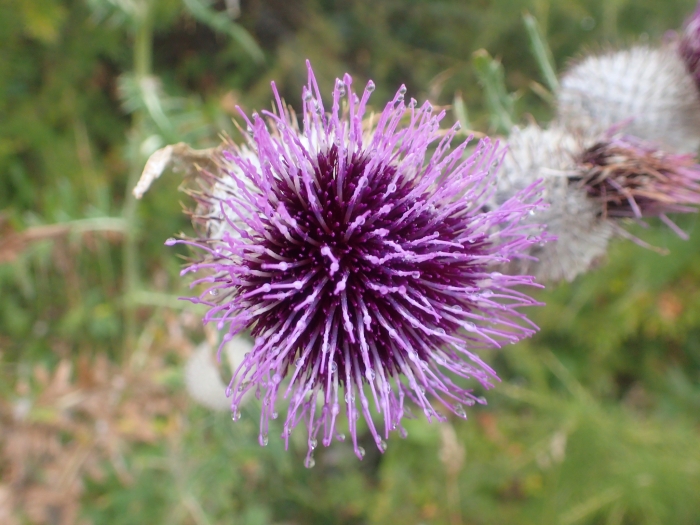(Lophiolepis eriophora)
(Lophiolepis eriophora)
/
/

Juraj Ahel
CC BY 4.0
Image By:
Juraj Ahel
Recorded By:
Copyright:
CC BY 4.0
Copyright Notice:
Photo by: Juraj Ahel | License Type: CC BY 4.0 | License URL: http://creativecommons.org/licenses/by/4.0/ | Rights Holder: Juraj Ahel | Publisher: iNaturalist | Date Created: 2021-09-19T16:55:57-07:00 |
























Estimated Native Range
Summary
Lophiolepis eriophora, lacking a widely recognized common name, is a perennial herb. It is native to Europe, specifically thriving in open woodlands and scrub areas. This plant typically exhibits a modest height and width, with its exact dimensions varying depending on growing conditions. Lophiolepis eriophora is characterized by its green, hairy leaves and small, inconspicuous flowers that may not be particularly showy. It blooms in the late spring to early summer, with flower colors ranging from white to pale yellow.
In cultivation, Lophiolepis eriophora is valued for its drought tolerance and ability to thrive in poor soils, making it a suitable choice for xeriscaping and rock gardens. It is often used in border planting or as ground cover due to its low maintenance requirements. Gardeners should provide it with well-drained soil and full sun to part shade light conditions. While not commonly available in nurseries, it can be propagated by seeds or division. There are no widely known cultivars of this species. Potential problems include overwatering, which can lead to root rot. This plant is not known for being invasive or having aggressive roots.CC BY-SA 4.0
In cultivation, Lophiolepis eriophora is valued for its drought tolerance and ability to thrive in poor soils, making it a suitable choice for xeriscaping and rock gardens. It is often used in border planting or as ground cover due to its low maintenance requirements. Gardeners should provide it with well-drained soil and full sun to part shade light conditions. While not commonly available in nurseries, it can be propagated by seeds or division. There are no widely known cultivars of this species. Potential problems include overwatering, which can lead to root rot. This plant is not known for being invasive or having aggressive roots.CC BY-SA 4.0
Plant Description
- Plant Type: Herb, Subshrub
- Height: 0.5-1 feet
- Width: 1-2 feet
- Growth Rate: Moderate
- Flower Color: Yellow
- Flowering Season: Summer
- Leaf Retention: Deciduous
Growth Requirements
- Sun: Full Sun
- Water: Low
- Drainage: Medium
Common Uses
Drought Tolerant, Low Maintenance, Rock Garden
Natural Habitat
native to Europe, specifically thriving in open woodlands and scrub areas
Other Names
Common Names:
Scientific Names: , Lophiolepis eriophora, Carduus eriophorus, Carduus spurius, Carduus tomentosus, Cirsium chatenieri, Cirsium chodatii, Cirsium corbariense, Cirsium corbariense var. costae, Cirsium degenii
GBIF Accepted Name: